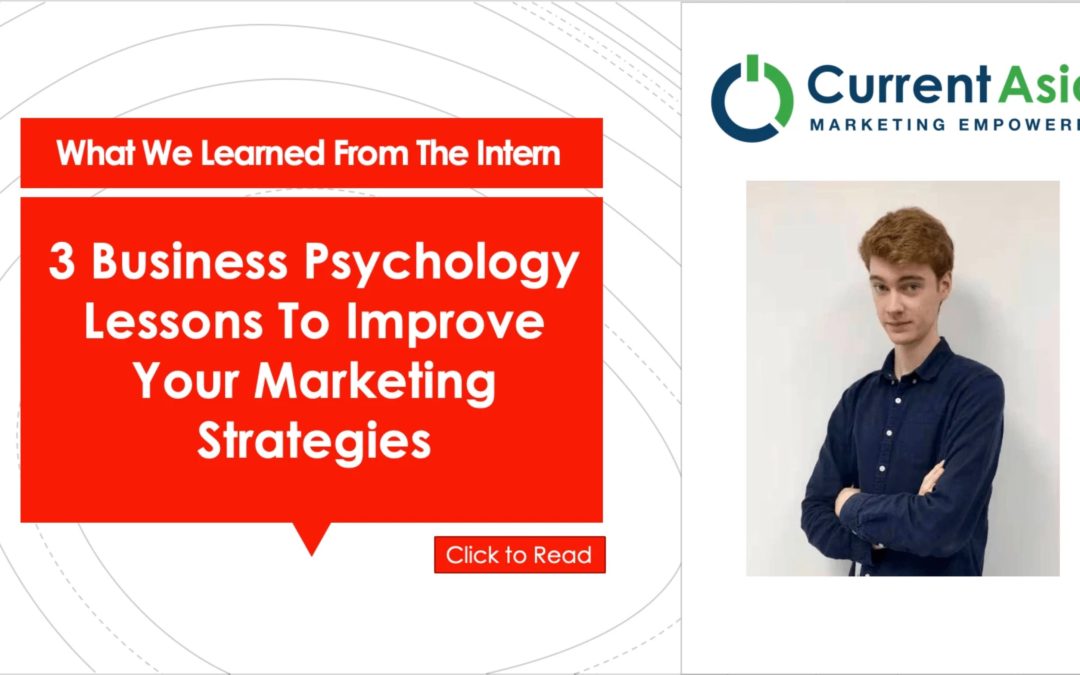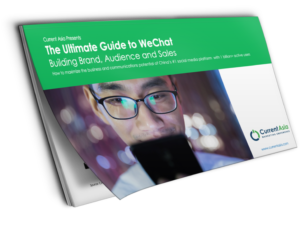Here’s what we learned from our intern Georg Schubert.
While getting work experience at Current Asia, he shared his thoughts on how understanding how people think and act the way they do is a key part of being a great marketer, based on what he studied at university.
Many business owners focus exclusively on how they can make the biggest margins on a product, while still remaining competitive. What they fail to consider are the very real factors that influence consumers during their purchase decisions. The following lessons about psychology will help you to attract and convert customers.
1. Anchoring – Use a higher price first as a reference point
Daniel Kahneman and Amos Tversky, in their Nobel Prize-winning work, demonstrated that the reference points people pick have drastic effects on their perceptions of value. For this reason, consumers are more likely to find a product “cheap” if they’re first exposed to a product of a higher price.
Consumers mentally categorize product prices as “low”, “medium” or “high”, and products they see later on will be categorized relative to what they’ve seen previously. People will often anchor on the chosen reference point even when other relevant market information is readily available to inform their decision making.
These practices reflect a belief that the products consumers see initially influence their later judgments and decisions. In particular, these contextual products create a standard for subsequent product evaluations.
You can implement this knowledge by positioning your products in such a way that consumers will see higher priced items first. If there’s a particular product you’re trying to promote, first determine your desired price point. Then, position higher priced products before that one on the page or in the aisle.
2. Decoy Effect – Useless options aren’t always useless
This effect can often be seen in pricing models. One price point is intentionally included to entice you to choose the most expensive option. In Dan Airley’s famous TED talk, he describes an ad from The Economist outlining their latest subscription packages. Here’s what they offered:
– Online subscription: $59
– Print subscription: $125
– Online and print subscription: $125
Dan Ariely, professor of psychology and behavioral economics at Duke University wondered about the rationale behind offering two options at the same price point; especially considering one option clearly offered a greater value.
He conducted an experiment with some of his students to see how many would choose each option. He found the vast majority (84%) of students chose the third option. The rest chose the first option, while no one chose the second one.
In a second experiment, he removed the second, “useless” option to see what would happen. Surprisingly, 68% chose the first option while only 32%chose the third option.
This proved that the “useless” option wasn’t so useless after all. While no one chose the second option in the first experiment, simply having it as an option somehow helped people decide what they wanted; and not only that, it made the third option more attractive, thereby increasing overall revenue.
This proves that it might be beneficial to test out a variety of price points and consider adding “useless” options. While no one will likely choose that option, it may make your other offerings appear more attractive, thus increasing sales.
3. Reciprocity
The concept of “reciprocity” is simple: if someone does something for you, you naturally will feel obligated to do something for them. The power of reciprocity principle was demonstrated in what was ostensibly an “art appreciation experiment”. In the experiment, subjects were asked to rate paintings with a partner, who was in reality a research assistant.
Halfway through the exercise, the research assistant would leave the room and return a little while later. For some subjects, he would bring back a soft drink. For other subjects, he would return empty-handed.
At the end of the exercise, the assistant asked the subjects whether they would be willing to do him a favor by purchasing raffle tickets from him. The subjects who had received the gift of a soda were far more likely to purchase tickets, even though the tickets were far more expensive than the soda had been.
There are a lot of ways to take advantage of reciprocity. It can be anything from a branded sweatshirt, to an exclusive eBook, to a free desktop background, to your expertise on a difficult subject matter. Even something as simple as a hand-written note can go a long way in establishing reciprocity. Just be sure you’re giving away the free thing before you ask for something in return.

